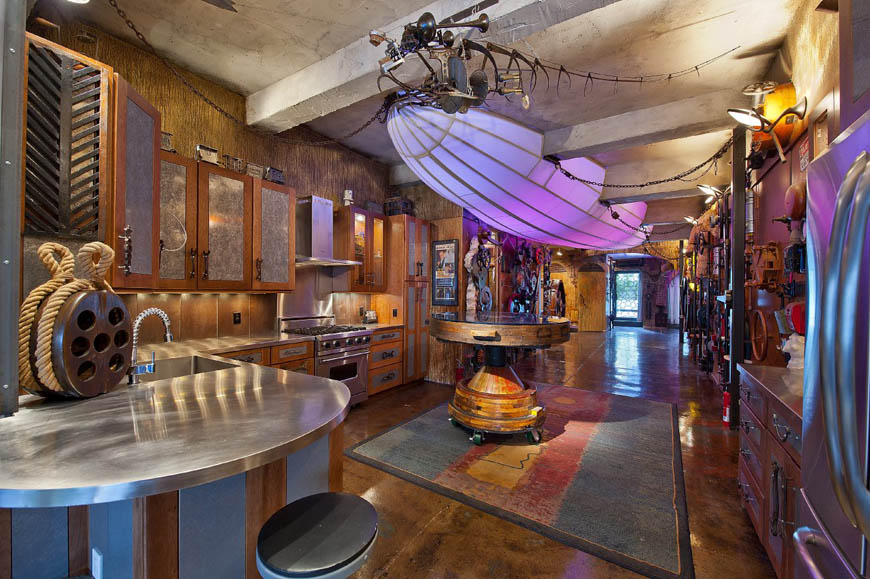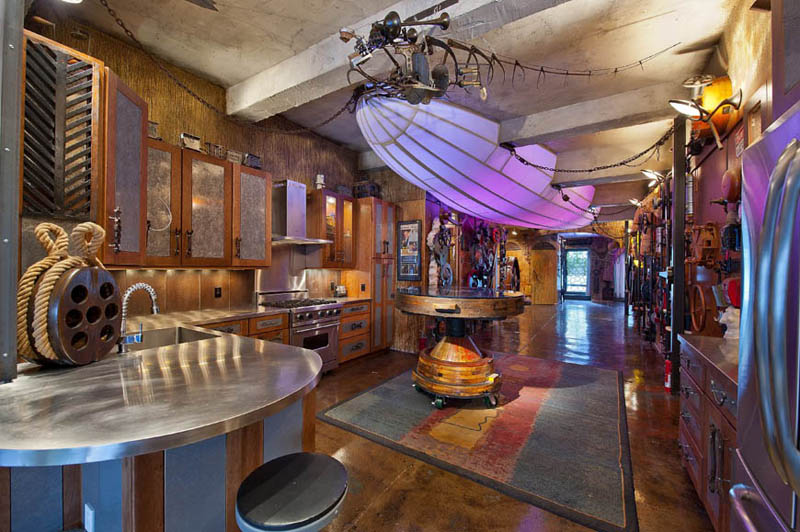Located at 120 West 29th Street in the Chelsea neighbourhood of New York City, this 1,800-square foot steampunk themed apartment is the type of place you definitely check out if they have an open house. For those not in NYC we can only ogle at the gallery below.
The place has been fully retrofitted in the steampunk aesthetic. Upon entering this semi-private building, you are greeted with a submarine style front entry, complete with keypad locking system and working porthole. The chef’s kitchen is furnished with high-end appliances and stainless steel countertops that allow for easy entertaining.
From the custom finished concrete floors to the 32-foot zeppelin LED programmable light system, this apartment is a truly unique living space. Open the oversized glass sliding doors and step into your private 500-square foot southern facing terrace sanctuary. This large open loft is a one-bedroom with 2-bathrooms that can be easily converted into a 2-bedroom space with a home office.
The building itself is a coop (granted the building only has 2 units) and the apartment is listed by Parul Brahmbhatt of the Core Group in New York City at $1,750,000 has been relisted by Nicole Beauchamp @ Warburg Realty for $1,695,000
What is Steampunk?
Steampunk is a genre which originated during the 1980s and early 1990s and incorporates elements of science fiction, fantasy, alternate history, horror, and speculative fiction. It involves a setting where steam power is widely used—whether in an alternate history such as Victorian era Britain or “Wild West”-era United States, or in a post-apocalyptic time —that incorporates elements of either science fiction or fantasy. Works of steampunk often feature anachronistic technology, or futuristic innovations as Victorians might have envisioned them, based on a Victorian perspective on fashion, culture, architectural style, and art. This technology includes such fictional machines as those found in the works of H. G. Wells and Jules Verne, or the contemporary authors Philip Pullman, Scott Westerfeld and China Mieville.
Other examples of steampunk contain alternative history-style presentations of such technology as lighter-than-air airships, analog computers, or such digital mechanical computers as Charles Babbage and Ada Lovelace’s Analytical Engine.
Steampunk also refers to art, fashion, and design that are informed by the aesthetics of Steampunk literature. Various modern utilitarian objects have been modded by individual artisans into a pseudo-Victorian mechanical “steampunk” style, and a number of visual and musical artists have been described as steampunk. [Source]
If you enjoyed this post, the Sifter highly recommends:

